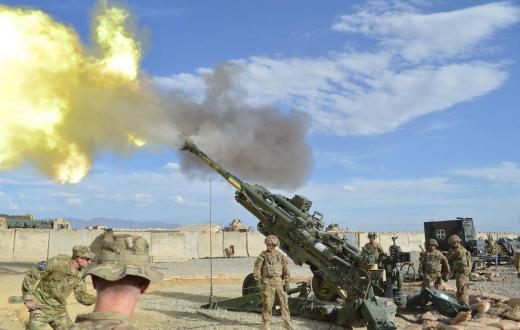What is Inertia?
In physics, inertia is an object’s resistance to a change in its motion. This could involve a change of speed or direction, an attempt to move a stationary object or an attempt to stop an object that is already moving. The idea is linked to Isaac Newton’s first law of motion, which states that an object’s motion will not change unless a force acts on it. Inertia depends on mass, since the more massive an object is, the more it resists a change in motion.
If an object is stationary, it will not move unless something pushes against it or pulls on it. Similarly, an object that is moving will continue to move at the same speed, in a straight line and in the same direction, unless a force influences it. On the Earth, a ball thrown horizontally through the air will, if left to itself, slow down and curve toward the ground. This is because the force of gravity pulls it toward the Earth and the air pushes against it, reducing its speed. In space, with no gravity or air resistance, the ball would simply continue moving in a straight line at a constant speed.

The fact that it is harder to move a heavy object than a light one demonstrates the relationship between inertia and mass. On the Earth, gravity complicates the issue, but in space, things are clearer. Here, a massive object — such as a cannon ball — and a light object — such as a tennis ball — are both weightless, but it still takes a much greater force to move a cannon ball than a tennis ball. Similarly, it would take more force to stop, or change the direction of, a moving cannon ball. Inertia can, therefore, be used to measure mass in a way that is independent of gravity.
Examples of Inertia

People encounter inertia on an everyday basis. For example, someone driving a car will experience a force pushing her back against the seat when the car is speeding up; this is due to the driver’s resistance to the car’s forward movement. Similarly, when the car slows down the driver is pushed forward — relative to the car — again, due to her resistance to the change in motion. This is why seat belts are an essential safety feature in cars. If the driver has to break suddenly, the occupants would continue moving forward at the original speed, and without seat belts to restrain them, they could be seriously injured.

The car’s own inertia is an important consideration for drivers. It explains why moving vehicles have a stopping distance that is dependent on the speed and the mass of the vehicle. A car’s resistance to a change in motion also explains why the car will skid out of control if the driver tries to turn too quickly: the vehicle will tend to continue moving in the same direction.
Rotational Inertia
This is a similar concept, but applies to objects that are spinning. Again, the more mass an object has, the more difficult it is to make it spin and the harder it is to stop it rotating if it is already doing so. The amount of resistance to a change in motion for a spinning object is known as its moment of inertia, which is usually given the symbol I. For a point on the surface of a rotating object, I is calculated as the mass multiplied by the square of the distance from the axis of rotation. Calculations for whole objects are more complicated.
When an object is moving in a straight line, its momentum is its mass multiplied by its speed. For a spinning object, the equivalent is its angular momentum, which is I multiplied by its speed of rotation. Angular momentum is always conserved, that is, it remains the same even if one of the contributory factors changes. A change to one factor must be compensated for by a change to the other so that the angular momentum remains constant.
A good example is the huge increase in speed of rotation when a star collapses under gravity into a neutron star. Stars normally rotate slowly, but when a neutron star forms, its diameter shrinks to a tiny fraction of its original value. This greatly reduces the moment of inertia at the star’s surface — since the distance to the axis of rotation is now much smaller — so its speed of rotation must greatly increase to maintain the same angular momentum. This is why neutron stars usually spin at many revolutions per second.
The Origin of Inertia
Isaac Newton, in formulating his laws of motion, assumed the existence of a fixed, absolute space against which all motion could be measured. In 1893, the physicist Ernst Mach proposed that absolute space did not make sense and that any change in the motion of an object should be thought of as relative to the distant stars. With Einstein’s theories of relativity, the idea of fixed space was indeed rejected, but it implies that the inertia of a nearby object is somehow influenced by objects many light years away. Moreover, the effect seems to be instantaneous. A number of theories have been put forward — some involving exotic ideas such as influences traveling backward in time — but, as of 2012, there appears to be no generally accepted explanation for the origin of inertia.
AS FEATURED ON:
AS FEATURED ON:













Discussion Comments
@anon59262: I am only a Junior (high school) student, and I have been having trouble with our physics text book so I went here to get a bit more insight into inertia. However, I think that the moment of inertia can be obtained by these formulas: I = [summation] Torque/[angular] velocity and for non angular: I = [summation] mass * (distance from axis)^2.
I am still learning on the subject and only half way through the section (and I am homeschooled, and we all know what that means/jk) so all this could be wrong! Thus far the problems are ending in kg*(m)^2 and I do not think it has a special unit because this is not a newton or anything.
What safety features of a car address the issue of inertia in a car?
To try to settle a discussion with a colleague can anyone tell me if inertia can be measured. Does it have a formula/equation (my colleague says that it can't) and does it have a unit of measurement like pressure or temperature for example. Inertia and moment of inertia are two different things -- is that correct? What is the difference?
to protect some parts of the body
why does the seatbelt and the headset are useful safety devices in a car?
Post your comments